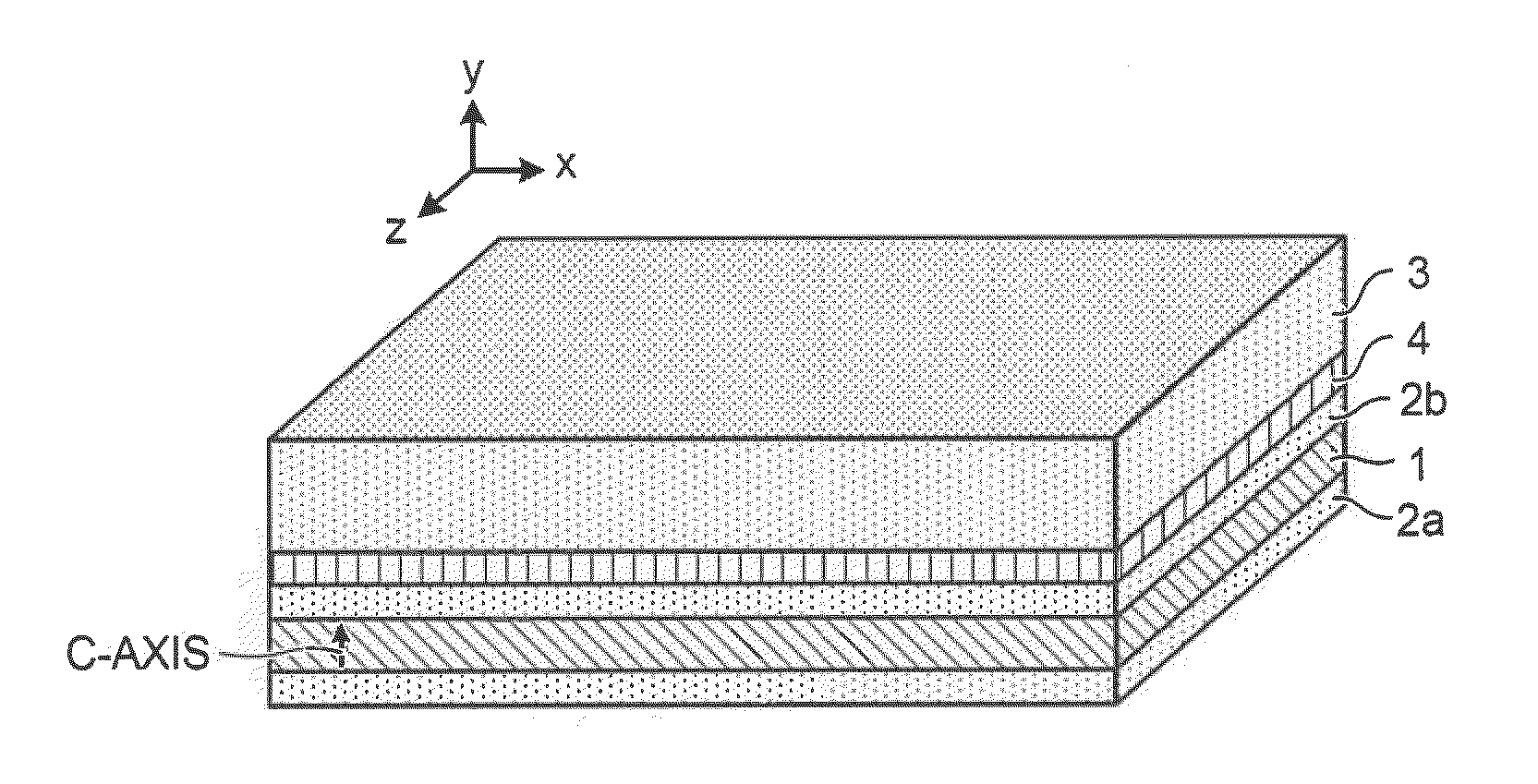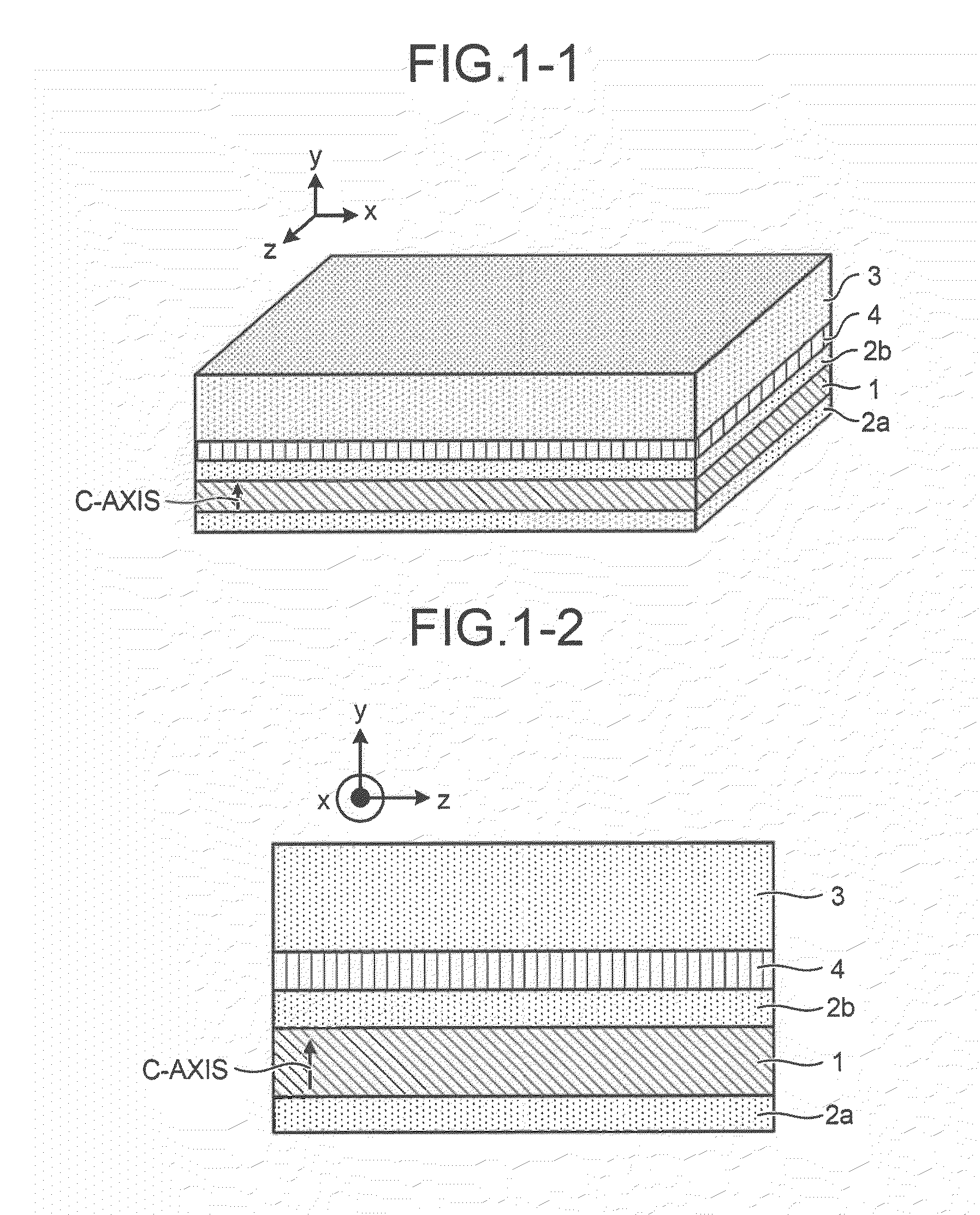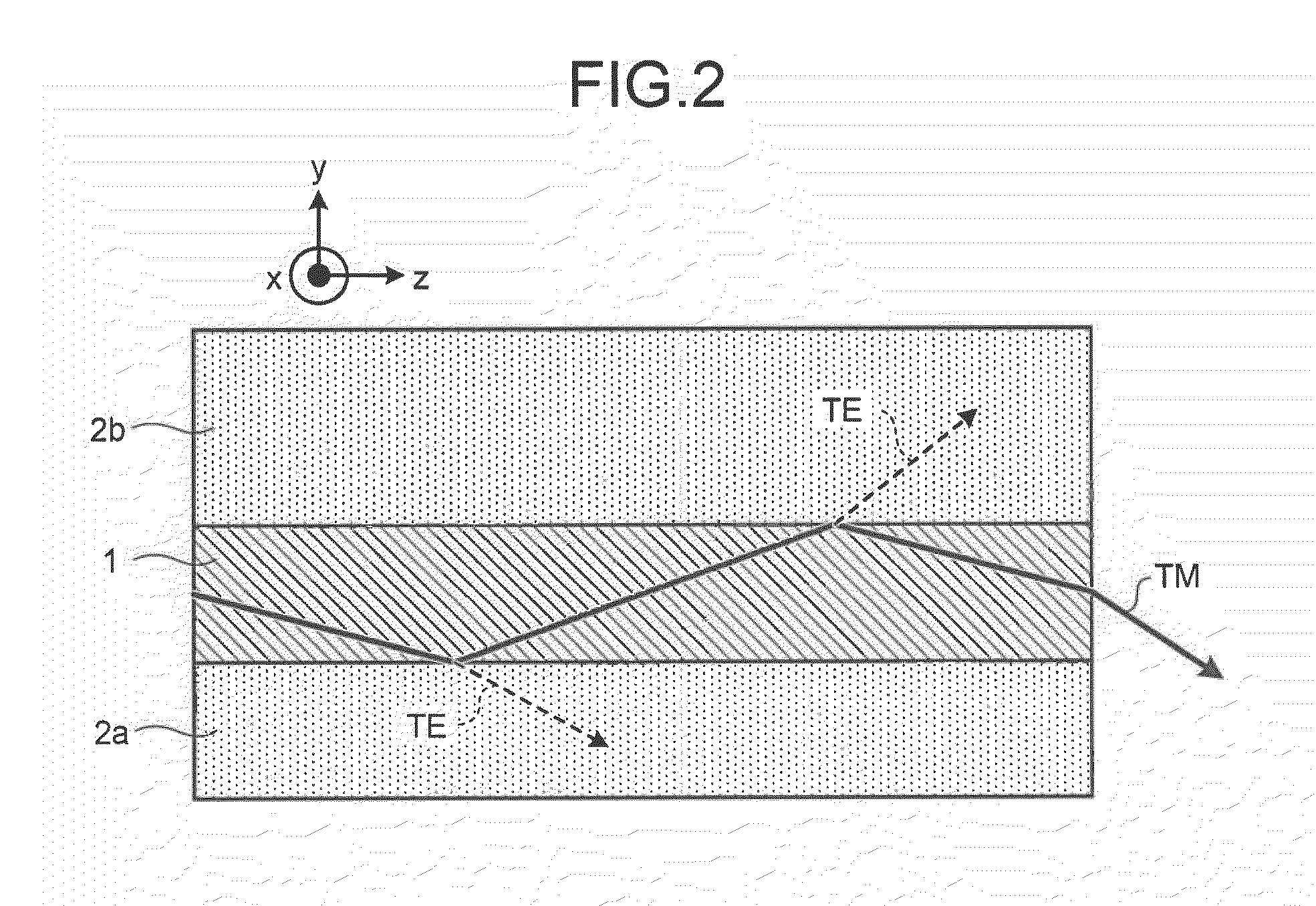Planar waveguide laser device
a laser device and waveguide technology, applied in laser details, optical resonator shape and construction, active medium materials, etc., can solve the problems of laser light oscillation, high gain, and easy oscillation of multiple waveguide modes
- Summary
- Abstract
- Description
- Claims
- Application Information
AI Technical Summary
Benefits of technology
Problems solved by technology
Method used
Image
Examples
first embodiment
[0029]FIG. 1-1 is a schematic diagram showing a perspective view of a structure of a planar waveguide laser device according to a first embodiment of the present invention.
[0030]FIG. 1-2 is a schematic diagram showing a cross section of the structure of the planar waveguide laser device according to the first embodiment. The planar waveguide laser device includes a laser medium 1 having a plate-like shape and clad 2a and 2b provided on both the top and bottom surfaces of this laser medium 1. In addition, a substrate 3 is adhered to the outer surface of either one of the clad 2a and 2b (clad 2b in this example) by way of a bonding agent 4. In FIGS. 1-1 and 1-2, it is assumed that, in a plane parallel to the rectangular top and bottom surfaces having the largest area in the laser medium 1, directions parallel to two orthogonal sides of this plane are x-axis and z-axis and that a direction perpendicular to these two axes, the x-axis and the z-axis, is y-axis. Here, it is assumed that a...
second embodiment
[0052]FIG. 4 is a schematic diagram showing examples of travelling paths of the laser light in the planar waveguide laser device according to the first embodiment. According to the first embodiment, if the refractive index of the outside of the clad 2a and 2b is smaller than the refractive index of the clad 2a and 2b, the laser light in the emission mode escaping into the clad 2a and 2b is reflected at the external boundary of the clad 2a and 2b, and comes back into the laser medium 1, where it is amplified (hereinafter, amplification of light that is not the laser light targeted for outputting is referred to as parasitic amplification), in addition to the laser light oscillated in the waveguide mode L1. This may cause a phenomenon in which the gain accumulated in the laser medium 1 is consumed. In such a situation, the laser light that is reflected at the boundary between the clad 2a and 2b and the outside is directly output through the output end surface, which is an out-of-clad p...
PUM
 Login to View More
Login to View More Abstract
Description
Claims
Application Information
 Login to View More
Login to View More - R&D
- Intellectual Property
- Life Sciences
- Materials
- Tech Scout
- Unparalleled Data Quality
- Higher Quality Content
- 60% Fewer Hallucinations
Browse by: Latest US Patents, China's latest patents, Technical Efficacy Thesaurus, Application Domain, Technology Topic, Popular Technical Reports.
© 2025 PatSnap. All rights reserved.Legal|Privacy policy|Modern Slavery Act Transparency Statement|Sitemap|About US| Contact US: help@patsnap.com



